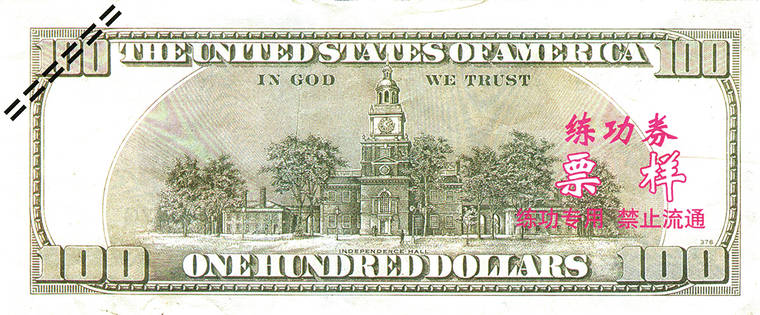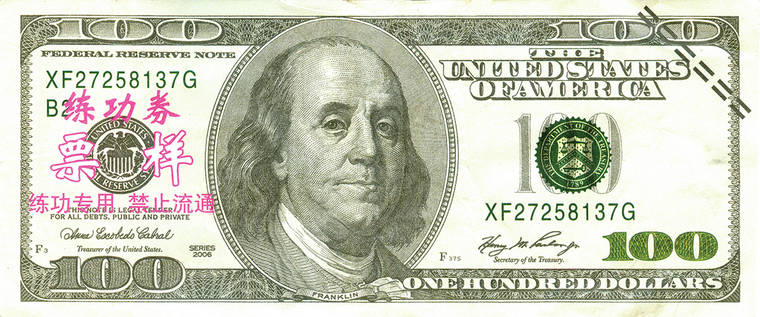LIHUE — Fake $100, $50 and $20 bills marked with Chinese characters are circulating the island.
The fake bills were originally manufactured as a training tool for Chinese banks that used them to teach their tellers how to recognize and count U.S. currency, according to Bryson Ponce, assistant chief of the Kauai Police Department’s Investigative Services Bureau,
“They’re everywhere,” Ponce said in an interview Monday, discussing the recent proliferation of the Chinese-marked bills. “And they look pretty much real, yeah?”
According to Ponce, this particular type of fake money began circulating around Kauai around five years ago, when the bills got into the hands of the general public and started being sold on the internet for prices as low as $17 for 100 pieces of currency, usually in $20, $50 and $100 denominations.
The KPD issued a warning about fake $100 bills “with red Chinese markings” in November 2015, after several vendors at an outdoor market in Kapaa noticed customers attempting to use them and called police.
Since then, the KPD has been getting reports about money with red Chinese markings on a semi-regular basis, but Ponce said he has noticed a rise in popularity over the past few months, with business owners calling in to give police a heads up about customers coming in with the fake bills.
Even though the bills may look similar to real currency at first glance, the markings on the face and the feel of the paper is usually enough that most people aren’t fooled, according to Ponce, who said that he has only seen a couple instances in which someone innocently tried to spend the bill. In the vast majority of cases, people are trying to pass them on purpose.
Ponce said this is the time of year when people need to be extra careful about the money they accept, explaining that with the onset of the holiday season, spending is up and people are handling more cash than normal.
“Black Friday is coming up, and Christmas is around the corner,” he said. “So it’s good for people to be aware.”
One simple tip for identifying a potential counterfeit is to compare the suspicious bill with a real one of the same denomination.
“A genuine bill appears really lifelike and stands out,” Ponce said, explaining that a fake will often look “dull and lifeless” in comparison.
Ponce also warned store clerks not to rely exclusively on counterfeit detector pens, which he said do not always work, explaining that often the best way to catch a fake is to “examine it, and feel it closely.”
Sometimes, fake bills are actually made with genuine paper by counterfeiters who bleach the original bill and print a higher denomination on it. This type of counterfeit may feel real but can be detected with a relatively simple visual test, according to Ponce.
“If the color of the treasury seal doesn’t match the serial number, it’s a good indicator that bill is fake,” he said.




What about Fake News? Doesn’t get covered but far more damaging.
What about fake patriots, too!
Duuummb. Captain Obvious.